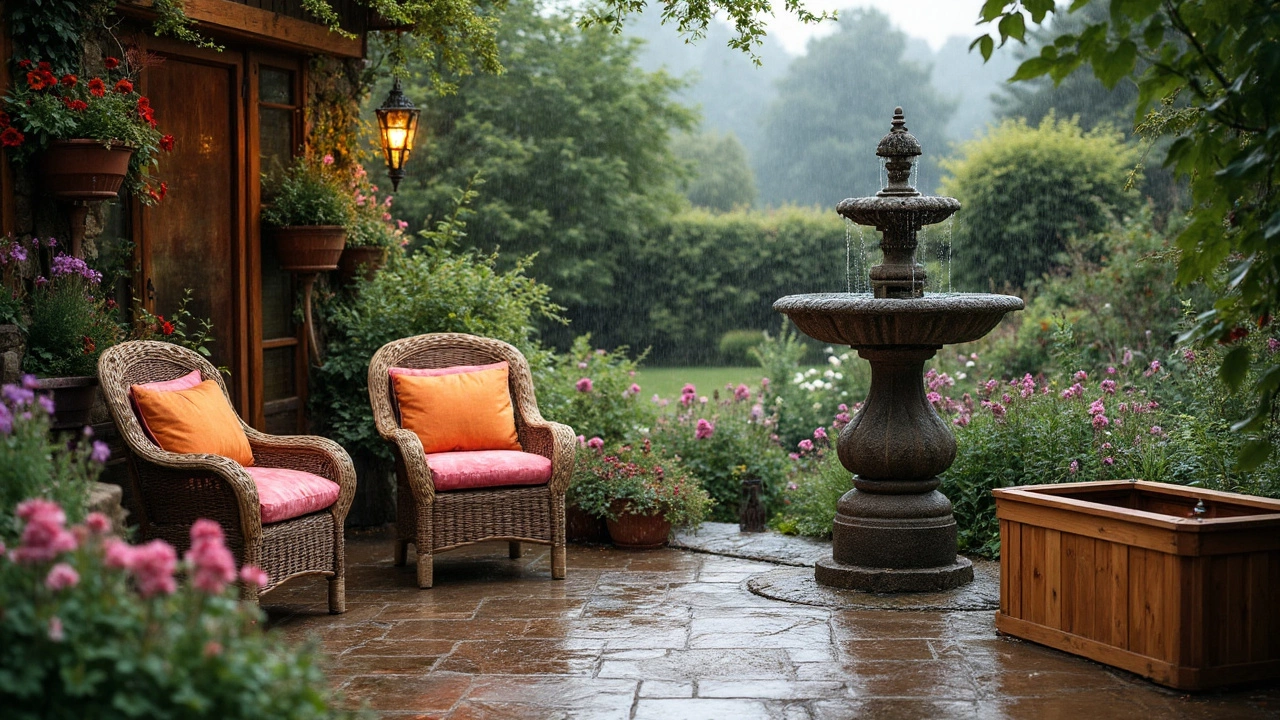Patio Cushions: Choose Comfort and Durability for Your Outdoor Space
If you love sitting outside, the right patio cushions can make a huge difference. Forget stiff, cheap pads that fade after a few sunny weeks – you deserve cushions that stay soft, keep their colour, and resist rain. In this guide we’ll cover the fabrics that actually work outdoors, how to size and style cushions for any furniture, and simple care tricks that keep them looking fresh year after year.
What Materials Stand Up to Sun, Wind and Rain?
Most outdoor cushions are built around three fabric families: solution‑dyed acrylic (think Sunbrella), polyester blends, and recycled plastics. Solution‑dyed acrylic is the gold standard – the colour is baked into the fiber, so UV rays can’t wash it out. It also repels water and dries fast, which means you won’t get that mildew smell after a summer shower.
Polyester blends are a budget‑friendly alternative. Look for a double‑weave weave and a water‑resistant coating. They won’t last as long as acrylic, but with a good storage routine they’ll serve you well for several seasons.
Eco‑conscious shoppers might choose cushions made from recycled PET bottles. These fabrics combine durability with a lower carbon footprint, and many brands now offer them in the same bold colours as the premium options.
Fit, Fill and Function – Picking the Right Cushion
Measure your furniture first. A common mistake is buying standard‑size cushions that leave gaps or look swamped. Measure the seat width, depth and thickness, then add a centimetre or two for a snug, custom‑fit feel.
When it comes to fill, high‑density foam gives firm support, while a cotton‑polyester blend offers a softer, more lounge‑like feel. Some cushions use a dual‑layer system: firm foam in the centre and a softer top layer for extra comfort. If you want cushions that hold their shape in windy weather, opt for polyester fibrefill – it bounces back quickly and dries faster than down.
Hidden zippers are a small detail that makes a big difference. They let you swap the cover for cleaning without ruining the fill. Look for double‑stitched seams; they’re the sign of a cushion built to survive regular use.
Once you’ve chosen the right material and size, think about colour and pattern. Light colours reflect heat, keeping seats cooler on hot days, while darker shades hide stains. If your garden has a lot of green, a pop of orange or teal can become a visual focal point. Mixing solid‑colour cushions with subtle stripes or botanical prints adds interest without overwhelming the space.
Care Tips to Keep Cushions Fresh All Year
After a rainy afternoon, simply shake off excess water and let the cushions air dry. Avoid direct heat or a tumble dryer – high temperatures can shrink the fabric or damage the fill. For stubborn stains, a mix of mild soap and warm water works well. Spot‑test any cleaner on a hidden area first.
Winter storage is where many people lose money. Store cushions in a dry, ventilated closet or a breathable storage bag. If you have space, keep the fills inside a sealed container to prevent moisture absorption. Adding a silica‑gel packet to the bag helps keep humidity low.
Finally, protect your investment with a simple spray‑on fabric protector. Reapply every 6‑12 months, especially after heavy rain or cleaning sessions.
With the right patio cushions, your outdoor area becomes an extension of your living room – comfy, stylish, and ready for any weather. Pick a durable fabric, match the size, and follow the easy care steps, and you’ll enjoy fresh, inviting seating season after season.
Where to Stash Patio Cushions When It Rains
Wondering where to put your patio cushions when it rains? Keeping them dry is crucial to prolong their life. From waterproof storage solutions to handy tips on quick drying methods, you'll find everything you need to keep your outdoor cushions in top shape. Your garden furniture deserves care, and this guide will help you protect it effortlessly.
More
